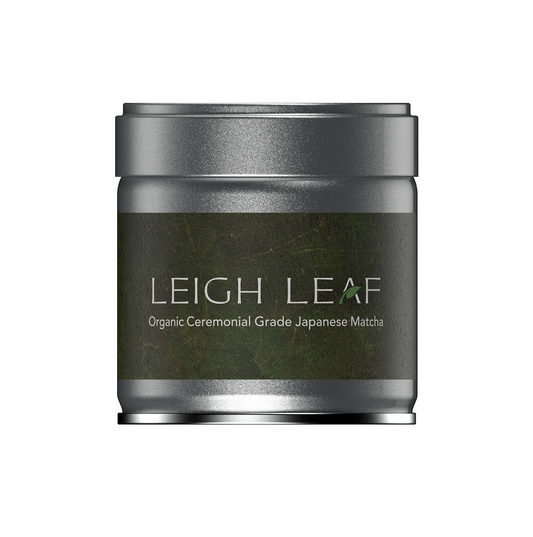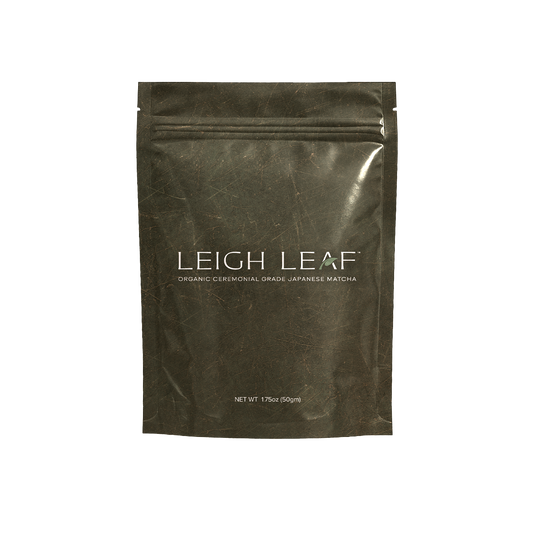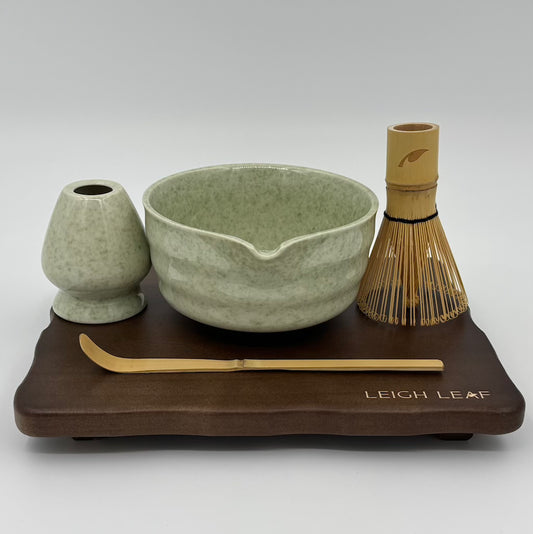
Who Invented Matcha?
Share
If you've ever sipped a soothing cup of matcha, you might have wondered who invented this vibrant green elixir and how it became a staple in Japanese culture. Matcha is not just a beverage; it's a symbol of tradition and a journey through history. Join me as we explore the fascinating story behind matcha, from its mysterious origins to its prominence today.
Table of content
Who Founded Matcha?
Before diving into the history of matcha, let's address the pressing question: who was the mastermind behind this brilliant concoction? The inventor of matcha can be traced back to a Zen Buddhist monk named Eisai. Eisai, a Japanese monk, returned to Japan in the late 12th century after a visit to China. With him, he brought a wealth of knowledge, including the concept of powdered tea.
While matcha, as we know it today, wasn't exactly his creation, Eisai played a pivotal role in popularizing and refining the practice. He promoted the cultivation and consumption of tea leaves, which were powdered and whisked into a frothy beverage. This laid the foundation for the matcha we know and love.
The Origin of Matcha
To truly understand the origins of matcha, we must venture back to China's Tang dynasty (618-907 CE). Powdered tea was already being consumed by Chinese nobility and Buddhist monks during this time period for its health benefits and meditative qualities. This ancient Chinese version of matcha was called "chanoyu."
The transformation of chanoyu into matcha, as we recognize it, took place in Japan during the Kamakura period (1185-1333 CE). This transition can be attributed to Eisai and another influential figure, Myoan Eisai, who introduced the method of stone-grinding green tea leaves into a fine powder.
The Ritual of Matcha
One of the most enchanting aspects of matcha is its cultural significance and the traditional Japanese tea ceremony, known as the "Way of Tea" or "Chanoyu." The ceremony emphasizes the preparation and consumption of matcha as a form of art and meditation.
In this elaborate ritual, matcha is carefully measured, whisked, and presented in a purposeful manner. The ceremony is a celebration of aesthetics, grace, and mindfulness, making it much more than just a simple beverage.
How Did Matcha Originate?
The journey of Matcha from China to Japan is a fascinating tale. Chinese monks were the first to incorporate powdered tea into their Zen practices, using it to stay alert during long meditation sessions. It was Myoan Eisai who saw the potential of this green elixir when he brought the tea seeds to Japan.
Eisai's "Kissa Yojoki," or "Book of Tea," was a seminal work that documented the health benefits of tea. He introduced the idea that tea could promote good health and longevity, further fueling interest in this unique beverage. With his efforts, matcha found its roots in Japan, and its popularity began to soar.
What Was Matcha Originally Used For?
Originally, Buddhist monks and the elite were the primary consumers of matcha. It was considered a delicacy and a symbol of status. Matcha was used not only as a beverage but also as a ceremonial offering in Zen monasteries.
Over time, the use of organic matcha expanded beyond religious rituals. Samurai warriors started consuming it for its energy-boosting properties, which provided them with stamina and focus on the battlefield. As matcha's popularity grew, it became more accessible to the general population, evolving from an exclusive luxury to an everyday indulgence.
Why Is Matcha So Famous?
The fame of matcha can be attributed to several factors. First and foremost, its unique flavor and vibrant green color set it apart from other teas. It has a rich, umami taste, often described as earthy, sweet, and slightly bitter. The shade-grown tea leaves used to make matcha result in a higher concentration of chlorophyll, which gives it that distinct green hue.
Moreover, the numerous health benefits associated with matcha have contributed to its fame. Matcha is packed with antioxidants, including catechins, which are known for their cancer-fighting properties. It's also an excellent source of L-theanine, an amino acid that promotes relaxation and mental clarity, making it the ideal choice for those seeking both energy and calmness.
Matcha's versatility in culinary applications has also played a significant role in its popularity. It's not limited to just tea; you can find matcha in a wide range of dishes, from ice cream and pastries to savory dishes like noodles and sauces. This adaptability has made matcha a sought-after ingredient in the culinary world.
As matcha's reputation has grown, it has also found its way into mainstream café culture. Matcha lattes, frappes, and even matcha-infused cocktails have become popular choices at coffee shops and restaurants, introducing this green elixir to a wider audience. Visit Leigh Leaf to learn more about Matcha.
Conclusion
In conclusion, the history of matcha is a tale of transformation, innovation, and cultural significance. From its origins in China to its refinement in Japan, matcha has evolved into a symbol of tradition and a beloved beverage worldwide. Its journey from an exclusive luxury to a staple in modern culture is a testament to its enduring appeal.
The story of Matcha also highlights the influential role of individuals like Eisai and Myoan Eisai in shaping its destiny. Their contributions to the world of tea laid the groundwork for the matcha we cherish today.
Matcha's fame can be attributed to its unique flavor, health benefits, and adaptability in culinary creations. It has transcended its traditional boundaries to become a global phenomenon loved by people from all walks of life.
As we raise a cup of matcha to our lips, we are not only savoring a delicious and healthful beverage but also participating in a centuries-old tradition that connects us with the past and enriches our present. So, the next time you enjoy a frothy, vibrant matcha latte, remember the journey that this green elixir has undertaken to reach your cup—a journey full of history, culture, and innovation.




